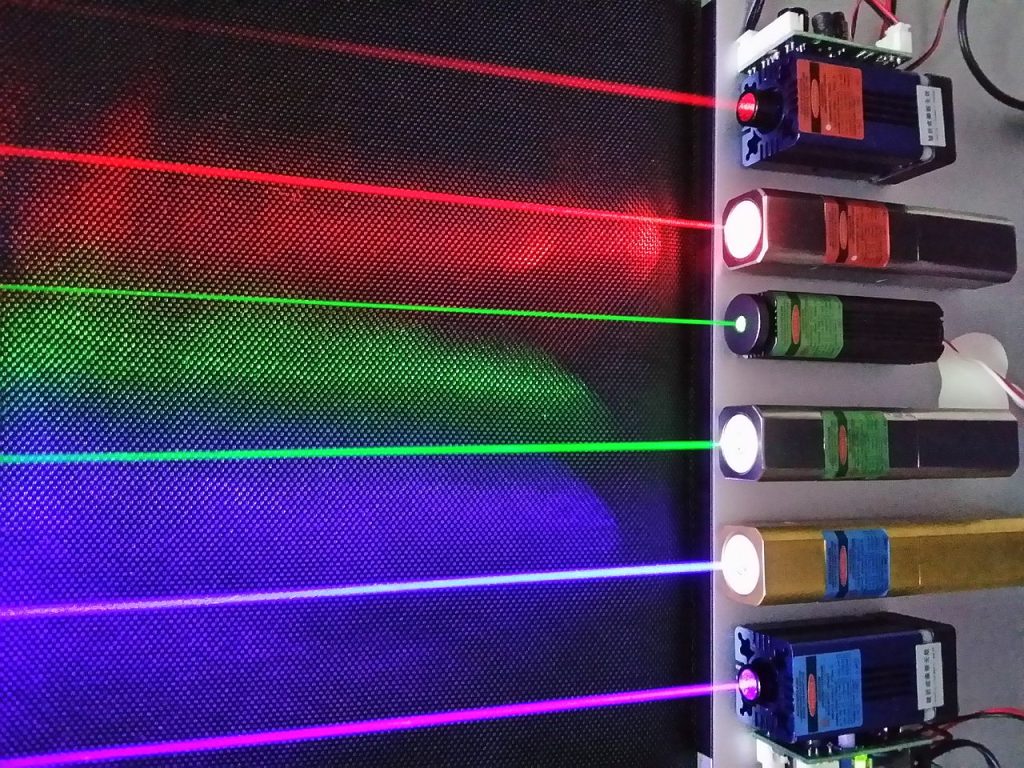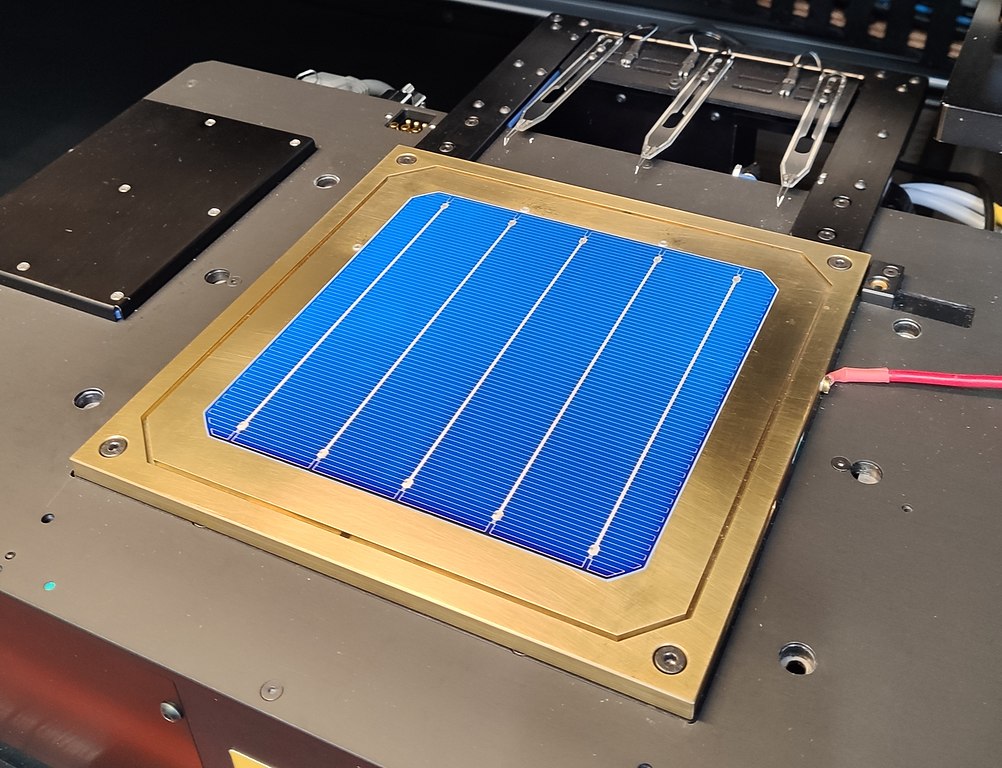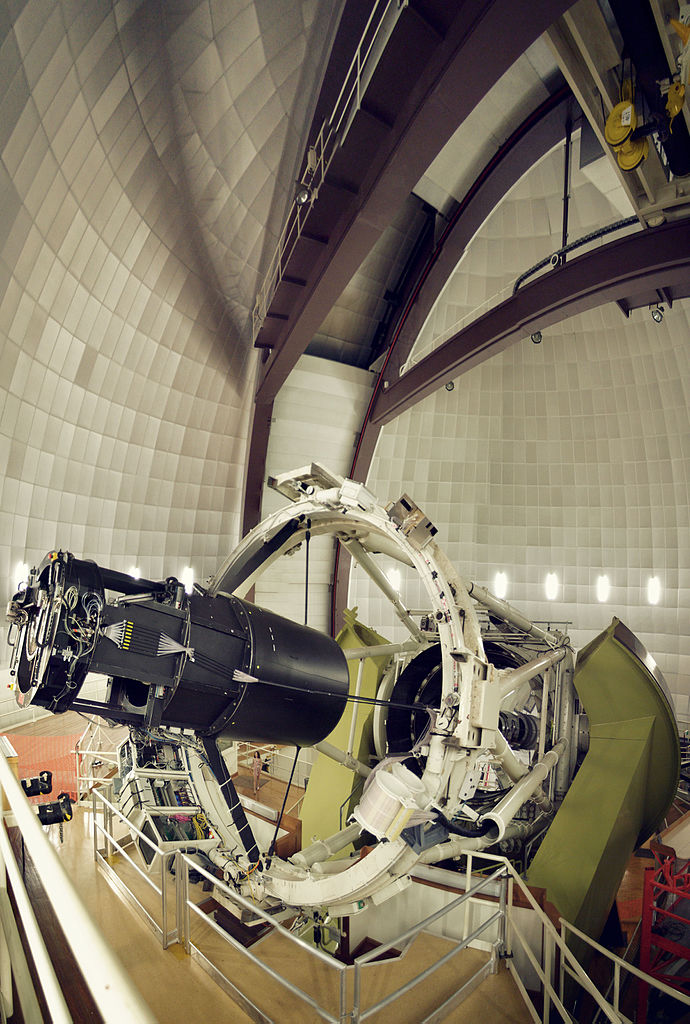Optics 2: electronic technologies and spectral analysis
This is part 2 of two pages covering selected technologies from the field of optics. See Optics 1: lenses and ocular devices for an introduction to the topic, and examples of technologies such as lenses, camera obscura, camera lucida, kaleidoscopes and 3D glasses.
Laser
How is it different to normal light?
Albert Einstein’s paper On the Quantum Theory of Radiation (1917) theorised the physics of lasers long before they were first created and used in 1960 by American engineer Theodore Harold Maiman. The word LASER is, in fact, an acronym: Light Amplification by Stimulated Emission of Radiation. A laser light is different from a common light devices because it is a coherent light source – which means that a laser can be a very narrow spectrum of light – only one colour (temporal coherence) that can be focused on a very small spot (spatial coherence). This is unlike other lights, which have a broader spectrum and radiate out in multiple directions. Lasers can be very powerful because of this coherence. An example of this is laser cutting technology, which uses a very powerful beam of light to heat very small areas of materials like metal or wood to melting or burning point – which “cuts” the material very precisely.

How does it work?
A laser is made with a tube that is filled with some type of gas, liquid or crystal material. The tube has mirrors at both ends, but one of the mirrors is partially transparent to allow some of the light to pass through it.
Energy is applied to the material in the tube – this could be a powerful light source, or some other source of energy like gamma rays. This energy also causes the material in the tube to produce light (photons) by exciting the atoms inside it. The photons bounce back and forth between the mirrors at the ends of the tube, which creates more photons. Some of these photons escape the tube through the mirror that is partly transparent, and this is what makes a laser beam (Figure 2.13). Light from a laser travels in a straight line and doesn’t get weaker the further it gets from its source, unlike radiant light. This makes it very useful across long distances.
Lasers are used in lots of ways – in industrial and commercial processes such as in cutting tools, barcode scanners, and laser printers – or at home in optical disc players like DVD and Blu-ray, laser pointing tools, etc.

Optical fibre is made from very thin, transparent fibres of glass (silica) or plastic that are a tenth of the thickness of a human hair. These fibres are able to transmit light from one end to another very efficiently by bouncing photons along the length of the fibre.
The photons don’t escape from the fibre because of a phenomenon called total internal reflection – the photons bounce off the walls at an angle and keep bouncing along until they reach the end of the fibre. Optical fibres are also covered in a different layer of glass cladding that helps keep the light inside the optical fibre tube until it reaches the end (Figure 2.14).
This technology can be used as a form of lighting, and is very useful in lighting small spaces that are difficult to access, such as in medical procedures. You can view internal organs with optical fibre cables without having to cut a body open (Endoscopy). This method of light transmission is also used for telephone calls and to send data across the Internet (Broadband) through specially developed fibre optic cables that can transmit very large quantities of information very quickly by encoding data in pulses of light.
Optical fibre is a better material than traditional copper wire for transmitting data for a number of reasons:
- there is less signal loss than wire – which means fewer amplifiers are needed to carry data long distances
- there is no electromagnetic interference from other cables – which can happen with copper wire
- it has a higher bandwidth – fibre optic cables can carry a lot more data than equivalent copper wires.
Learn more about optical fibre
Photovoltaic cells – solar electricity generation

A photovoltaic cell (PV cell) (or solar cell) is a special type of semiconductor that converts visible light into direct current (DC) electricity. Some PV cells can also convert infrared or ultraviolet radiation into DC electricity. Solar electric systems like the panels we put on our roofs for electricity and hot water, or the little grey squares that power small devices like garden lights, use PV cells to generate power that can be used immediately or stored in a battery for later use (Figure 2.15).
In simple terms, a PV cell is made from two layers of crystalline silicon – one layer is positively charged, and the other is negatively charged. When photons enter the layers of the cell, this generates a flow of electrons from the atoms in the cell material, creating an electrical charge of DC electricity. For solar panels in our homes, the DC electricity is changed into alternating current (AC) electricity by an inverter device.
Learn more about photovoltaic cells and how they work
Spectral analysis in astronomy

A spectrometer is a very useful device in astronomy. It splits lightwaves into different parts of the spectrum, which can then be measured and analysed to find out what planets, stars, galaxies and other celestial bodies are made of – even at great distances. It can also detect the speed and direction of their movement. This is called spectral analysis.
In 1868 a spectroscope was used to detect helium for the first time by using a prism to spread out light from the sun. An unusual yellow line was observed in this prism which was determined to be helium.
Learn more about spectral analysis from this CSIRO resource
Learn more here about the history of optics

